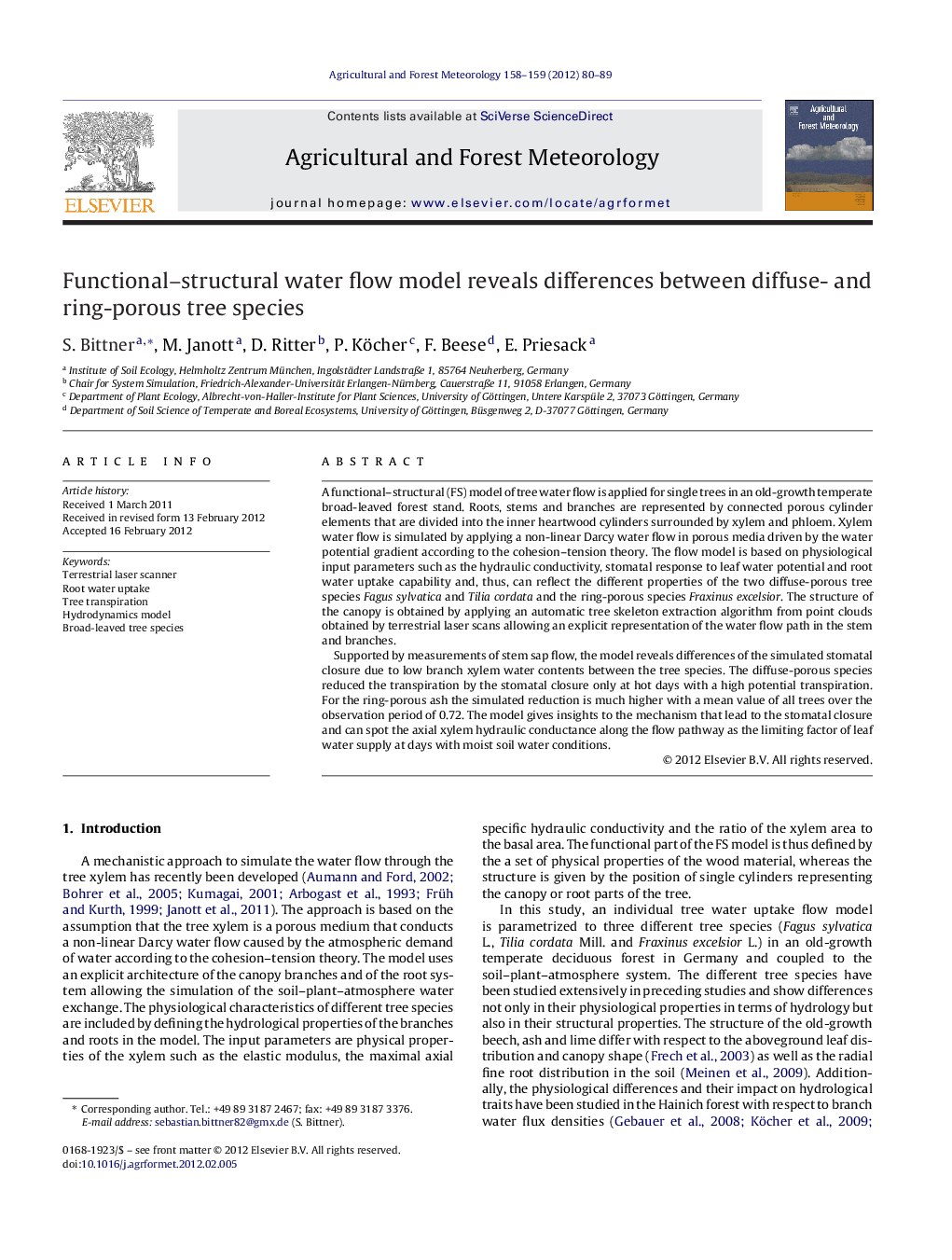| کد مقاله | کد نشریه | سال انتشار | مقاله انگلیسی | نسخه تمام متن |
|---|---|---|---|---|
| 81951 | 158363 | 2012 | 10 صفحه PDF | دانلود رایگان |

A functional–structural (FS) model of tree water flow is applied for single trees in an old-growth temperate broad-leaved forest stand. Roots, stems and branches are represented by connected porous cylinder elements that are divided into the inner heartwood cylinders surrounded by xylem and phloem. Xylem water flow is simulated by applying a non-linear Darcy water flow in porous media driven by the water potential gradient according to the cohesion–tension theory. The flow model is based on physiological input parameters such as the hydraulic conductivity, stomatal response to leaf water potential and root water uptake capability and, thus, can reflect the different properties of the two diffuse-porous tree species Fagus sylvatica and Tilia cordata and the ring-porous species Fraxinus excelsior. The structure of the canopy is obtained by applying an automatic tree skeleton extraction algorithm from point clouds obtained by terrestrial laser scans allowing an explicit representation of the water flow path in the stem and branches.Supported by measurements of stem sap flow, the model reveals differences of the simulated stomatal closure due to low branch xylem water contents between the tree species. The diffuse-porous species reduced the transpiration by the stomatal closure only at hot days with a high potential transpiration. For the ring-porous ash the simulated reduction is much higher with a mean value of all trees over the observation period of 0.72. The model gives insights to the mechanism that lead to the stomatal closure and can spot the axial xylem hydraulic conductance along the flow pathway as the limiting factor of leaf water supply at days with moist soil water conditions.
► Terrestrial laser scanner data were used in a functional–structural model to simulate the 3D water flux of old-growth tree roots, stem, and branches.
► Modeled differences in the daily water use between ring-porous ash and diffuse-porous beech and lime are based on species-specific hydrological properties.
► For all three simulated tree species, the depletion of the water that is stored in the branches and stems accounts for 20–29% of the daily transpiration.
Journal: Agricultural and Forest Meteorology - Volumes 158–159, 15 June 2012, Pages 80–89